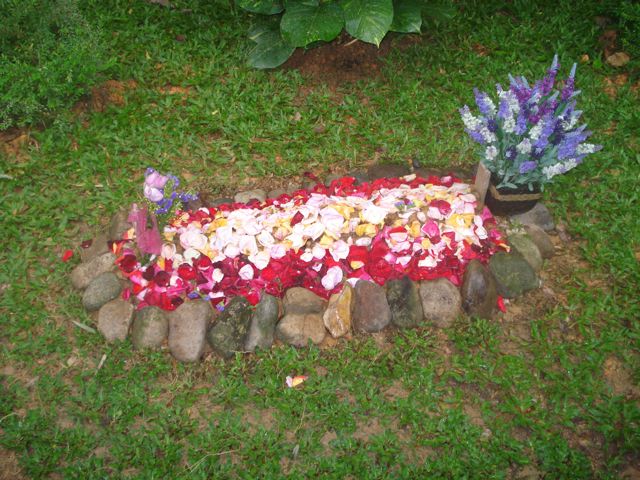Esther - when 'hatred' is retrospective
Preamble: - Last week a Muslim friend declined to step into Starbucks. Being aware of his engram we had our beans elsewhere without debate. After discussing matters at hand, he attempted to banter his position for refusing the coffee shop. I promised to listen to his explanation after he views Esther, an Italian production, where the role of a Jewish heroine who lived a millennium before the birth of Islam, is retold.
January 2009, a Muslim cleric did civil society a favor by restating the Book of Esther unwittingly adding an Estheriac premium to the Starbucks bean. He said the beguiling smile of the lady in the Starbucks insignia is a caricature of Queen Esther, the Jewish heroine in the Story of Purim.
Posturing befitting a comic, a smiling Safwat Higazi calmly told the media “You should boycott this company. Starbucks are located in Mecca as well as in Cairo. It is not enough to avoid entering this coffee shop. It is not enough to refrain from drinking this coffee. You must urge people never to go there. Do you know who Queen Esther was and what the crown on her head means? This is the crown of the Persian kingdom. The girl you see is Esther, the queen of the Jews in Persia and we want Starbucks shut down throughout the Arab and Islamic world - but none of you should consider throwing stones at the shop”
Doctrinal hatred is comical if the hatred is not embraced by a sizable number of hate-mongers but when the object of hatred is made historically retrospective by a Pan-Islamist, it becomes fodder for the funny pages of the media.
The thing is, when an Islamic cleric in the 21st century generates the animosity of his clan towards a beautiful and revered lady of her time who’s tenure pre-dates the birth his doctrine by a good millennium, then civil society who loves its coffee has a serious issue on its hands - if negation of reason is taken seriously by the civil.
Words - Tommy Peters.
A befitting conclusion to the story alluding to the rancor and hate of Haman still evident in Persia today:- The Bible is replete with profuse praise for Persia (the much-maligned Iran of today) and its rulers. In the book of Ezra, the Lord speaks through the proclamations of Cyrus, the king of Persia, who declares, 'The Lord God of Heaven hath given me all the kingdoms of the Earth, and he has charged me to build him a house in Jerusalem.' Cyrus acceded to this divine command, and thus was the second Temple in Jerusalem built. In other parts of the Old Testament, there is hearty praise of Cyrus as God's 'Anointed' and the 'Chosen' ruler, who freed Jews from their Babylonian captivity. Scholars of history and exegetes of the Bible concur that ancient Persia was exemplary for its willingness to help the Jews fight the age-old curse of anti-Semitism. The Jewish feast of Purim celebrates the fact that Esther, queen to a Persian king, saved the Jews of the kingdom from annihilation. But along with the benevolence of Cyrus there lurked on the Iranian horizon the race of Haman, whose mind and heart was darkened by rancor and hate. Today, Ahmadinejad has altogether forfeited the magnanimity of Cyrus, and opted instead to embrace the poisoned malice of Haman. The duality of the approach to Jews evident in the dawn of Iranian civilization can easily be seen in the troubled history of 20th century as well - Abbas Milani (author - The Myth of the Great Satan)
(Advanced appreciation is rendered for materials used without express permission of copyright owners)
Words - Tommy Peters.
A befitting conclusion to the story alluding to the rancor and hate of Haman still evident in Persia today:- The Bible is replete with profuse praise for Persia (the much-maligned Iran of today) and its rulers. In the book of Ezra, the Lord speaks through the proclamations of Cyrus, the king of Persia, who declares, 'The Lord God of Heaven hath given me all the kingdoms of the Earth, and he has charged me to build him a house in Jerusalem.' Cyrus acceded to this divine command, and thus was the second Temple in Jerusalem built. In other parts of the Old Testament, there is hearty praise of Cyrus as God's 'Anointed' and the 'Chosen' ruler, who freed Jews from their Babylonian captivity. Scholars of history and exegetes of the Bible concur that ancient Persia was exemplary for its willingness to help the Jews fight the age-old curse of anti-Semitism. The Jewish feast of Purim celebrates the fact that Esther, queen to a Persian king, saved the Jews of the kingdom from annihilation. But along with the benevolence of Cyrus there lurked on the Iranian horizon the race of Haman, whose mind and heart was darkened by rancor and hate. Today, Ahmadinejad has altogether forfeited the magnanimity of Cyrus, and opted instead to embrace the poisoned malice of Haman. The duality of the approach to Jews evident in the dawn of Iranian civilization can easily be seen in the troubled history of 20th century as well - Abbas Milani (author - The Myth of the Great Satan)
(Advanced appreciation is rendered for materials used without express permission of copyright owners)


.jpg)
Sorry, but this has nothing to do with religions and Starbucks. I just stumbled upon this interesting blog.
ReplyDeleteDo you have an email contact I could use? I might want to find out more about bicycles, and you seem to be someone who knows quite a bit. Was hoping you could help. Perhaps I won't be buying a bike so soon, but I'd like to embark on fact-finding as early as I can.
tm.peters@mac.com
ReplyDelete